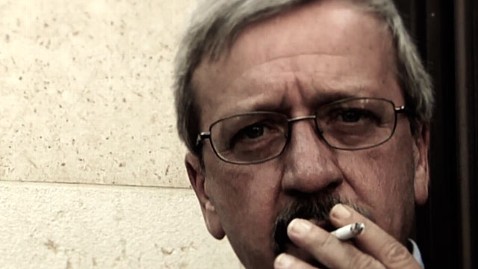Charlie Zhang
Gabriele/Pronko
Unit 2 Reflection #1
28 November 2011
When I look to the past, there are several parallels that I can draw between times past and times present. Perhaps the overarching reason for such similarity is the concept of human nature: the idea that humans have not and will not change their habits over the course of hundreds and even thousands of years. This very concept of human nature is the basis of government for many philosophers, such as Machiavelli, Locke, Hobbes, and Rousseau. Examining contemporary society yields many instances of self-preservation, greed, and overall “pessimistic” human nature. Riots and strikes hold underneath their unionist ideals a rather selfish basis, and in fact much of today’s systems of government focus on “calming the masses”. Upon analysis of not only forceful content but also pointed style, I find that Machiavelli is the most compelling and viable source of successful government “contracts”, his works accurately reflecting the Occupy Wall Street movement, the ongoing Arab Spring in the Middle East, as well as presidential elections in the US. Though it may seem cynical of me to imply such low opinions of humans, my deliberations and decisions made ultimately led me to the same conclusions that Machiavelli and even Hobbes developed.
I have always enjoyed philosophy. To logically discuss what always cannot be easily conceptualized allows me to truly take personal opinions into matters. This interest was compounded when I entered debate. For my specific event, a one-on-one duel of morals and values known as Lincoln Douglass, morals are paramount in arguments, and rather than using facts, logical conclusions are to be argued through explanation. The obvious source of such coherent reasoning is philosophy. Thus, upon tackling the assignment, I had already educated myself about the general ideas of the popular philosophers.
Armed with the proper knowledge, I began taking it upon myself to morally judge certain actions, regardless of whether they were already determined as right or wrong by society. For example, I saw that although protestors in Occupy Wall Street were justly angry and passionate, most of them were college graduates who had just finished their education and could not find a job, and heaped with large amounts of debt. The philosophical question to ask in this situation is whether or not they would be there protesting in the (now) cold streets if they were able to resolve their individual issues. If such motives are selfish, then that helps to assert the “greed” of humans and their self-preserving nature. Machiavelli forms this as essentially his major premise for The Prince.
Niccolò Machiavelli also adds in his discourse about government the need for a prince to keep power, and the need for a prince to do whatever he needs to do to keep that control. Before I read his work, I had preconceived notions about his pessimism, having already read part of it from AP European History last year. Also, in a historical context, I was aware that he was writing in a time of dissolution, when princes seemed to gain power as quickly as they lost it. Thus, it seemed to me that Machiavelli was not being pessimistic about human nature but rather realistic. This overall impression could be seen mainly through his diction and rhetorical arrangement of the piece.
Simple, pointed, and blunt, the voice of Machiavelli calmly discusses and dissects each part of his argument. There are not too many long and effusive sentences that attempt to display ethos on the side of the author; rather, Machiavelli even addresses a theoretical prince with the second person “you”, creating at once a casual and formal reading. This is even more significant in light of the fact that he is philosophizing about government. The calm tone and manner in which Machiavelli discourses adds to the theme of reality that he appeals to. There are no attempts to get around what his main points are.
A blunt and pointed tone adds to the effectiveness of Machiavelli’s straightforward arrangement. Separating the reading into sections, Machiavelli addresses each section first with a refutation or concession. For example, in “How a Prince Should Keep His Word”, Machiavelli first concedes that a prince should be considered as a trustworthy figure worthy of his royal status. Yet after the brief symbolic nod to the opposing argument, Niccolò quickly dives into how this message is quickly twisted in face of greedy and inherently primal people. For each point he provides a powerful example to illustrate the truth.
The truth of Machiavelli’s words manifests itself most powerfully in today’s international community. Governments today focus upon a delicate balance that sounds eerily similar to the beliefs of Machiavelli: the perfect balance by preserving power through (however false) appeasement of the masses. When that balance is shattered, disaster for the government follows. In the Middle East, I found that the Arab Spring is the ideal example of what happens when a government fails to keep its power through improper “appeasement” of the people. Machiavelli predicted in every situation that without the right iron grip over one’s own power, it is lost very quickly to discontent citizens. It is no longer government feared or loved, but rather one hated, a state of mind which Machiavelli says should be avoided at all costs. The government failed to control its people, and, as Machiavelli predicts, it collapses under its failure.
Even governments that are (arguably) stable, such as the US government, must adhere to Machiavelli’s “underhanded” moves to maintain power and stability within a nation. As per Machiavelli’s concepts, the President of the United States is to be a symbol of the free world, a sign of hope for most Americans to look to. However, beneath the glory and pride, the President often navigates through a politically treacherous government not only at home but also abroad. He (and hopefully one day she) manipulates those around, using tools of rhetoric to his advantage as he sways a varied population, from the leader of terrorist organizations to discontent citizens whom he hopes to gain for re-election.
I see now that Machiavelli’s realism stands in greatest light in terms of viable government. While it is classified as “philosophy” along with Hobbes and Locke, Machiavelli promotes what I believe is the most realistic form. There is no fancy discourse or attempt to logic his way into a confusing or unreasonable action; he presents things as is. And in doing so, I found that my political views had altered. I was no longer simply a student or an observer. I was one who understood the reality around me. I now comprehended justification of normally abhorred actions. I had become, as Machiavelli writes for, a proper prince.



.png)






